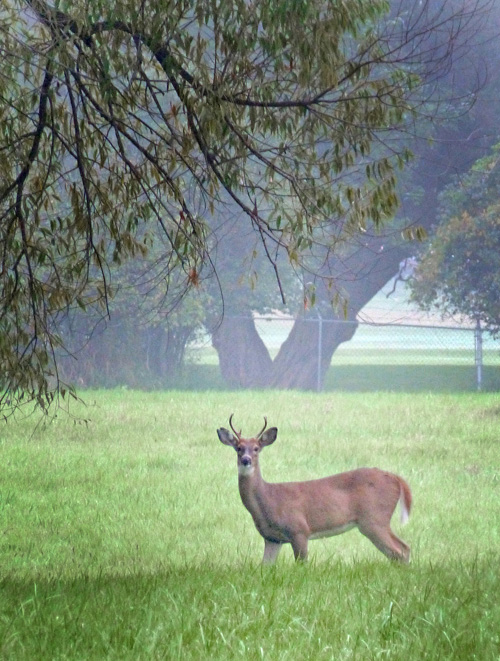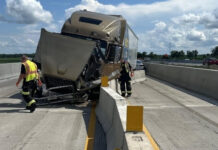
Since the Deer Task Force (DTF) in Warsaw started in 2006, archers have taken 627 deer.
Tuesday, the Warsaw Common Council approved a resolution determining the existence of deer nuisance areas within the city’s corporate boundaries.
Councilman Jeff Grose, who chairs the DTF, told the other Council members that the resolution will allow for the creation of deer reduction zones, “which will allow us to participate in reduction efforts in targeting deer within the city limits.”
The state of Indiana has given Warsaw and the surrounding area “Urban Zone” status, as it has the past several years, he said. Grose said that means the state has identified the entire city as a nuisance area.
“By passing this resolution, this will allow us to take steps forward to have another season,” he said.
Last year, he said they took 46 deer – 12 in public zones and 34 in private. Forty-one were doe and five were buck, “which means 89% of the deer taken were doe, which our goal is 90% or more, which means it’s truly a reduction.”
This year, he said they still have a few veteran archers that need training and were training a week ago. They went to the Warsaw Police Department to shoot and go through some protocols and expectations.
“We do have a handful of new archers this year. We did open it up, and I don’t know exactly what the number is, but it looks like we’re going to have 41 total this year,” Grose stated.
He said Mayor Joe Thallemer was with him back in 2006 when the DTF got started after years of working on it.
“Right now, we are at 627 deer taken since its inception, and I will tell you that it’s probably close to 90% doe, like we had last year,” Grose said.
Asked when the reduction effort starts, Grose said Sept. 15 and can go all the way to Jan. 31 because the state declared an Urban Zone status for the area.
Councilwoman Diane Quance said she noticed that Grose’s DTF maps reflect the city’s population growth areas and she appreciated him looking at those and adjusting the maps as they go. Grose said he adjusted those a year ago, but didn’t this year because the Urban Zone status means the entire corporate limits is a nuisance zone.
“Nuisance zone allows us to create hunting zones which are called reduction zones and that’s even how the state speaks now as they work through all of this,” Grose said.
He said the city doesn’t always get Urban Zone status but they have the past few years. “That tells you that the state recognizes that we have too many deer in the area. Which means what? More tags for the archers,” Grose explained.
Councilman Josh Finch, who said he deer hunts himself, asked if the hunters donate any of the venison to organizers that help feed the hungry. Grose said the archers aren’t required to do it, but he has several who do. Councilwoman Cindy Dobbins said she knows Fellowship Missions does receive donations of venison.
Quance said another important thing about the reduction efforts was that it’s not just about deer eating the gardens or getting hit by vehicles. “But when you have an overpopulation, then you have disease and then that spreads into other domestic animals,” she said.
Grose said everything about the DTF is kept online for tracking and communication purposes, which has really been helpful.
Mayor Joe Thallemer asked Grose if the nuisance zones were different from last year. Grose said he did not change them because of the Urban Zone status of the city. He said the DTF’s safety protocols don’t allow hunting in certain areas of the city. There will probably be 20 to 25 private properties available for the hunters to take deer, and just a handful of public properties.
Quance made a motion to approve the resolution, Councilman Mike Klondaris seconded it and it was approved 7-0.
In other business, the Council:
• Approved three transfers for the Warsaw-Wayne Fire Territory as requested by Fire Chief Garrett Holderman. The WWFT Board also approved the transfers Tuesday.
The transfers included moving $40,000 from machinery and equipment to the operating budget; a transfer of $15,000 from other capital outlays to communication and transportation; and $5,000 from professional services to other services and charges.
• Approved a resolution to transfer $37,924.88 from grant funds to aviation general fund for the Warsaw Municipal Airport.
Thallemer said it was basically grant money that came from the Federal Aviation Administration (FAA) for the north/south runway rehabilitation that is reimbursing Airport Manager Nick King’s budget.
• Heard an update report on the Lilly Center for Lakes and Streams from Director Dr. Nate Bosch. The city is one of the funders for the Center.
• Heard the group Women For Ukraine from Akron, Ind., requested Thallemer issue a proclamation for Ukraine’s Independence Day, which was declared 31 years ago. Ukraine’s Independence Day was declared Aug. 24, 1991.
Thallemer read the short proclamation which declared the week of Aug. 24 as Ukrainian Independence Day.
• Reviewed the non-binding review from the Kosciusko County Council.
The County Council is charged with reviewing each of the taxing unit’s levy limits and the effect of property tax credits on each unit annually at the first County Council meeting in August. In part, the review says the County Council supports each taxing unit’s efforts to collect what is needed for the unit to operate successfully with the least impact to taxpayers.




